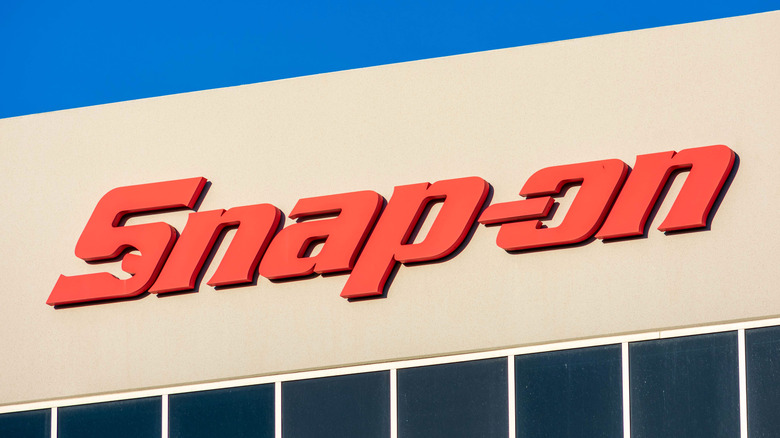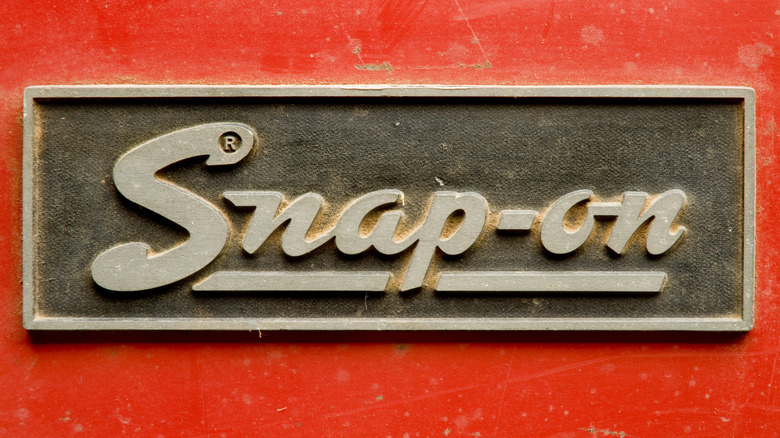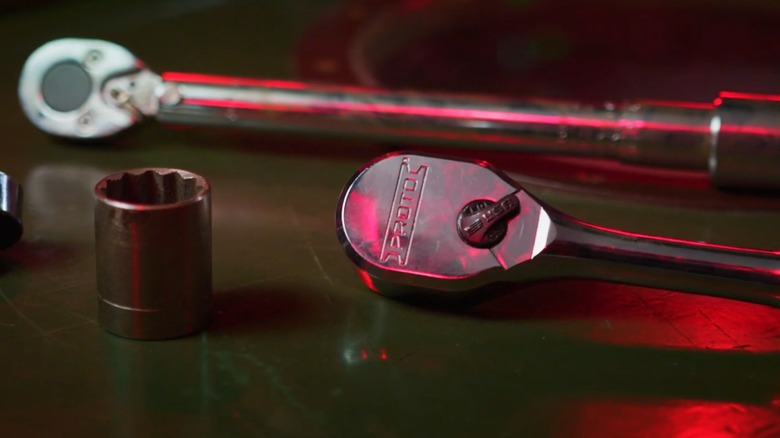Does The US Military Use Snap-On Tools? Here's What You Should Know
Tools can be advertised in a few different ways. Some are more casual-use, intended for those who use their tools sparingly, while others are geared toward professionals who will use them rigorously. One category that tends to be overlooked, however, is military-grade tools. In the same way that there are now common household products that were previously intended for the military, there are common civilian tools that have become mainstays of the United States military. And there's one particular brand that has come to be used across the military's branches.
The minds behind Snap-on tools have partnered with the U.S. military to provide it with various products. Snap-on supplies the armed forces with everything from simple hand tools to storage options to even military-specific appliances. A notable entry in the Snap-on military catalogue is the Powerhawk P-16X rescue system, a battery-operated cutting and opening tool for rescuing people trapped in tight spots, with various attachments to get the job done. As it turns out, the partnership between the military and Snap-on is far from a recent development. The two entities have worked together for almost a full century, with a major conflict kickstarting their collaboration.
The US military and Snap-on have worked together since WWII
The United States military has used Snap-on's products for some time, with the origin of their collaboration dating back to WWII. As the globe-spanning conflict raged into the 1940s, tool shortages became a reality. In response, the U.S. government struck a deal with Snap-on, the latter ramping up production to keep up with the demands of the war effort. More specifically, the brand provided tools that were used to keep air and land vehicles up and running — all while finding time to innovate and improve its tool offerings along the way.
During WWII, Snap-on made some major changes to its tools, which had become staples of the military. For one, it revised its materials, employing nickel alloy steel for increased durability. There were also new tool designs developed specifically for aviation — including, presumably, for maintaining some of the fastest of the WWII-era fighters — and heavy military equipment. This meant that the brand's lineup was more in line with the military's needs. Snap-on didn't forget about civilians during all of this, though. The company introduced a new distribution system, where authorized Snap-on salesmen sold tools directly to customers, maintaining the business amid a civilian tool shortage.
There's a storied history behind Snap-on's involvement with the U.S. military. As fruitful as the partnership has been, though, Snap-on is far from the only tool provider for the U.S. armed forces.
Snap-on is one of several military tool providers
Given its size, the United States military needs multiple tool providers to meet its demands. Alongside Snap-on, one of the most notable is Stanley Black and Decker, which has also been involved with the military since WWII. In the modern era, it provides storage solutions as well as a host of other products like missile casings and armor plates. Proto Industrial works closely with the U.S. military as well, specifically offering sockets, ratchets, and wrenches, among other tools, for use in maintaining machinery and vehicles to keep them operating at their best.
On a smaller scale, well-known manufacturers have also joined with the military to supply multi-tools for soldiers. Multi-purpose Leatherman knives — not to be confused with Swiss army knives — for example, are made for on- and off-duty military use. Pliers, bottle openers, knives, firearm repair tools, and more are all possible tools in a Leatherman knife. Occupying a similar space, Gerber has several military-grade knives and multi-tools in its catalog. No matter the type of tools it needs, the U.S. military likely has no issue acquiring them, given the number of companies in its orbit.
Though it's not the only provider of military tools, Snap-on remains one of the most prominent. With a history dating back to World War II, odds are the brand and the military will continue collaborating for many years to come.


